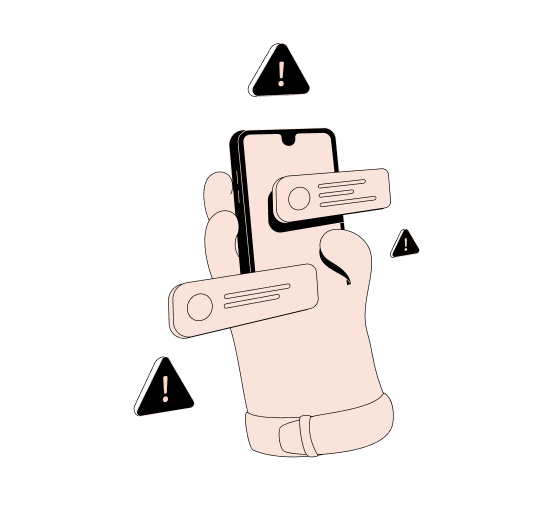When we say business etiquette, we usually mean about the way we should dress for work or behave during business meetings. However, we rarely think about chatting rules we should follow in our daily communication with coworkers and clients.
Knowing etiquette for chatting at work is vital, since it is one of the most important ways for nurturing an open and honest communication in the workplace.
What is instant messaging etiquette and why is it important?
But, before we dive in and show you which chatting rules you’re breaking, let's explain what business chat etiquette is and why it's important.
We define group chat etiquette as basic manners we should all follow in the business world to decrease stress and conflict between team members and achieve business success.
Etiquette is vital in the business environment, as it creates a professional and respectful atmosphere, which leads to improved communication and collaboration.
With that being said, let’s have a look at seven instant messaging etiquette rules you’re definitely breaking.
Rule #1: Sending disjointed messages.
Many people perceive instant messaging as spoken communication in written form. This is why chats are usually more informal than emails or other forms of business communication. However, since people are more relaxed while chatting, they can frequently end up sending disjointed and broken messages that can be distracting for the person they’re talking with.
What to do instead?
Instead of sending separate messages, try to think about what you want to say and craft a whole message before you hit the “send button”. That way, the person on the other end won’t feel anxious about the things you want to tell them and won’t be distracted by the sound of notifications from their instant messaging app.
Rule #2: Not respecting “Offline” status.
Today, many workplaces operate on flexible schedules and remotely, with team members scattered around the globe. This is how some employees may work later in the evening, while others might be more active during the day. Furthermore, working at the same workplace doesn’t equal having the same engagements during the day. This is how some coworkers might be in a meeting, taking a break, or focused on a task they have planned to do for that day.
This is why it is so important to be wary about the “offline” and “online” status before sending a message to your coworker.
What to do instead?
Pay attention to the “do not disturb status” and regard it as a closed door. Be sure to send a message when their status changes or send an email they can read later. Lastly, you should avoid sending work-related instant messages to coworkers after hours or on weekends unless it is a genuine emergency and you have no other way to reach them.
Rule #3: Not sending emojis.
Emojis are a fantastic way to "season" or conversation and add meaning to written words - even in business communication. Emojis can help in setting the tone of communication and ease uncomfortable situations and messages that could be interpreted negatively. Just think about the times someone has sent you an "ok." message without a smiley. Smells passive-aggression, right?
What to do instead?
Next time you send a message, think about the vibe it sends to the recipient. Put a smiley or two, and let your counterpart know what you're thinking and feeling.
Rule #4: Leaving others to guess what you want to say.
We're sometimes so focused on a task we need to complete that we become unaware that others might not be following our train of thought. This is how we might end up sending messages to our coworkers that start from the middle, continuing on our internal train of thought and failing to provide any context.
What to do instead?
To avoid sending messages that others need to guess their meaning, as well as follow the instant messaging etiquette rules, we should wait and pause before we press the "send" button.
Instead, we should think about the person we're messaging, figure out whether they'll know what we're talking about, and provide the context to our message, ensuring it's easy to understand.
Rule #5: Not greeting people.
Chatting might be different from spoken communication and more casual than e-mail. However, decorum needs to be respected regardless of the medium we use to communicate.
What to do instead?
Before you send a message, start with a "Hi" or "hello" or by asking them if they have time to chat with you instead of telling them what you want right away.
Rule #6: Leaving people on "seen".
Do you remember times when you were actively dating? When you were exchanging messages with your crush and anxiously waited for them to send you a message. If you did, then it happened to you once in a while they left you on "read".
Leaving messages on "seen" is inappropriate and rude in dating, but it's also a huge no-no in the business world. In fact, breaking this instant messaging etiquette rule is one of the worst things you can do online to show disrespect to your coworkers.
Indeed, sometimes it happens that we read the message the coworker has sent us, but we cannot reply to it immediately.
What to do instead?
Instead of thinking we're going to reply to the message later, leaving it on "read", and forgetting about it, we should acknowledge it with a simple "I'm busy right now, but I'll respond to it later" message. By doing this, we will appear more professional and show our team members we think about them and value them.
Rule #7: Not thinking twice before creating a group chat.
Group chats can be very distracting due to the number of notifications we get during heated conversations. They can also be confusing if we have to scroll endlessly to find the information we need. Or if we have to scroll endlessly only to find out, we're not concerned by the things discussed in a group. The truth is - an average person needs around 25 minutes to return to task after interruption.
What to do instead?
We should be mindful of other people's time and energy, as much as we want them to respect us. That said, if you have to say something to a group of people, make sure to create chats inviting people who need to hear what you're saying.
Most collaboration tools are made to make our communication and work processes faster and more convenient, and creating a separate chat is usually a two-click process. One of the main rules of business chat etiquette is to send only crucial information without adding unnecessary distractions. After all, you can always make non-work related chats you can engage in at your convenience without endangering the focus of your coworkers, ensuring you fully respect instant messaging etiquette rules.
Did you break any of these instant messaging etiquette rules?
After reading this, we're sure you'll never make the same mistakes ever again. If you're wondering how to create an instant messaging policy for your workplace, look no further. We've got you covered right here in this article.

.png)
